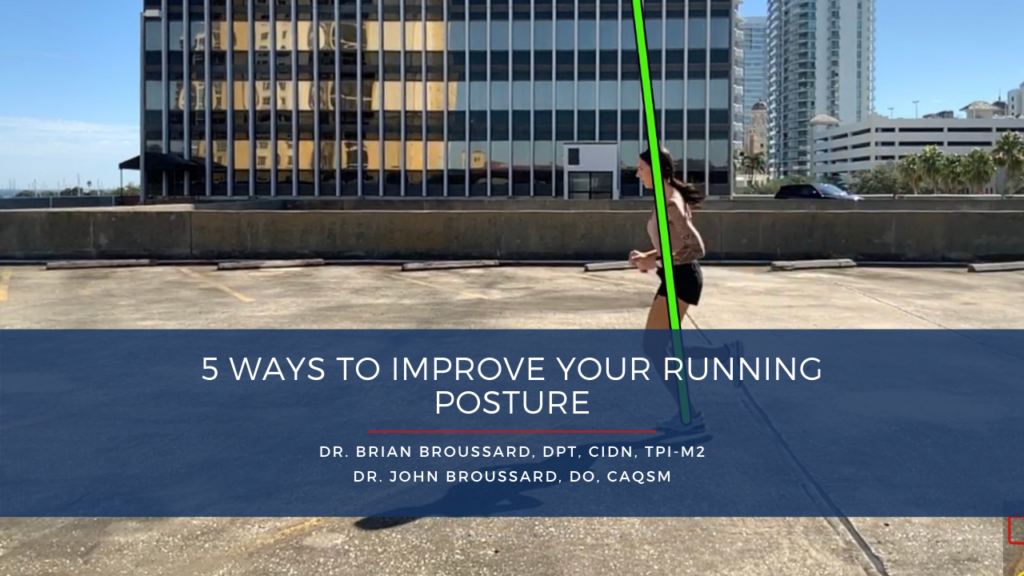Looking to improve your running form and your running posture? Improving your run form and posture can improve your efficiency, improve your speed, and help you to run with reduced risk of injury due to less stress on your body!
Running form shouldn’t be ignored by even the casual runner, because it’s extremely important if you want to run strong and run forever!
The good is news is that there are some easy tips that you can follow to help with your running form!
Through working with hundreds of runners, analyzing running form, and helping injured runners overcome injury, we’ve been able to pick up some of the most effective and simply strategies that help improve form and posture!
It’s important to know that each runner has different learned habits, is able to correct and make changes at different speeds, and that these cues take practice for them to become learned!
Let’s start going over these cues and breaking them down one by one!
1. Relax Your Shoulders
Do you feel shoulder or neck tension when you run?
This is something that most runners don’t think about when they run, but the two extremities attached to your upper body can have a big impact.
Your arms and shoulders should be relaxed as you run, not elevated or shrugged up to your ears. They should be slightly retracted (pulled back) by activating your shoulder blades to do so. This helps overall posture by itself.
One mistake runners make is letting their elbows drift away from their body during their run. This tenses the upper body and expends energy, decreasing your overall efficiency.
Keep those elbows close to your sides, shoulder slightly pulled back but loose so they can swing with each stride.
2. Stand Tall
This is quite obvious, but it can be a problem for a lot of runners. If you are someone who notices that your begin to slouch some in runs, you may want to listen up!
Some runners begin with great posture, but they start to slouch forward with their shoulders and body as they rack up the miles and get tired.
This hunched over position and curved posture actually causes you to work even harder, puts you more at risk for injury, and decreases your breathing effectiveness.
This is because your core isn’t adequately engaged and your diaphragm can’t work properly due to the position of your thorax.
So, try to think about this. Imagine a string is attached to the top of your head and it’s pulling you up to towards the sky!
3. Keep Your Ribs Down
Do you feel like your extending your back when you try to fix your posture? Do you have back discomfort right in the lower and center part of your back?
This can happen when runners confuse fixing their posture with “poking our your chest” or phrases similar which cause people to make compensations.
Runners can also acquire a spine repeated spinal extension pattern with each stride that lengthens the abdominal muscles and places excessive stress on the thoracolumbar junction.
We call this “flaring the ribs.” This is when the lower ribs poke out and up due to this extension in the middle/lower back area around the thoracolumbar junctions. This can cause some really confusing mid and lower back pain in runners!
4. Activate Your Core Before
It’s super important to warm up the engine and get ready to rock-n-roll before you go for a run. Without your core working properly, everything else just isn’t working optimally. Yes that means your glutes, hamstrings, quads, and even your breathing muscles.
A quick set or two of Dead Bugs or Planks will do the trick.
Wondering about what else you can do for a pre-round warm up?
Should you static stretch or dynamic stretch? How long should it take? What else should I activate?
Our Free 5 Minute Runner’s Warm-Up is a great resource! It’s a free downloadable guide and video walkthrough that will give you the guidance you need!
5. Keep a Forward Lean
When running, the objective is to go forward. That means you need to get your momentum going forward! It’s important to keep your body in an upright posture, but you don’t want to let yourself fall into a posture where your “momentum line” is straight vertical.
A runner with good posture will be able to demonstrate a position on camera as if they are falling forward. To look at this, we get a recording of a runner with a side view and we draw a line from their ear to their same side ankle at the moment that their knees are crossing.
That line should be angled more forward than straight up and down.
Let’s Wrap It Up
These are just some simple tips that every runner can implement into their training and their runs to help themselves run with better posture for enhanced efficiency and reduced injury risk.
1. Relax your shoulders to conserve energy, improve breathing, and optimize upper body posture.
2. Stand tall to help yourself maintain great overall body posture throughout your run.
3. Keep your ribs down to help your core stay engaged and to reduce unwanted back pain.
4. Activate your core before to enhance your bodies ability to perform optimally and to prevent running injuries.
5. Keep a forward lean to keep your momentum going forward and to help your muscles work less, not more.
These tips are just some tips and cues that we think about about and discuss with our running clients. Every one of our running clients go through a 3 Stage Video Running Analysis that includes..
1. Video from the front, back, and sides.
2. Breakdown of findings
3. Cues and drills to improve
This 3 Stage Video Running Analysis is something that is included in our Medical Running Analysis which is a comprehensive and highly valuable evaluation for injured runners and even non-injured. This combines the movement exam, injury analysis and diagnostic, and running analysis to get down the bottom of the issue and create a plan to get back to being a resilient runner!
We hope this blog has given you some helpful and actionable tips to insert right into your next run!
We’re always excited to chat with fellow runners and answer any questions about improving health, overcoming injury, and improving running performance!

